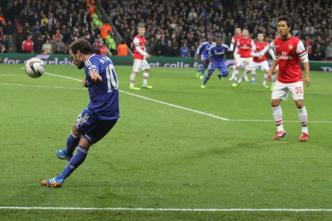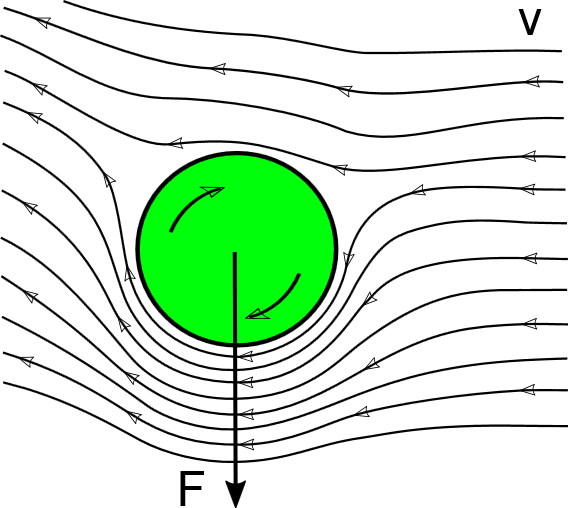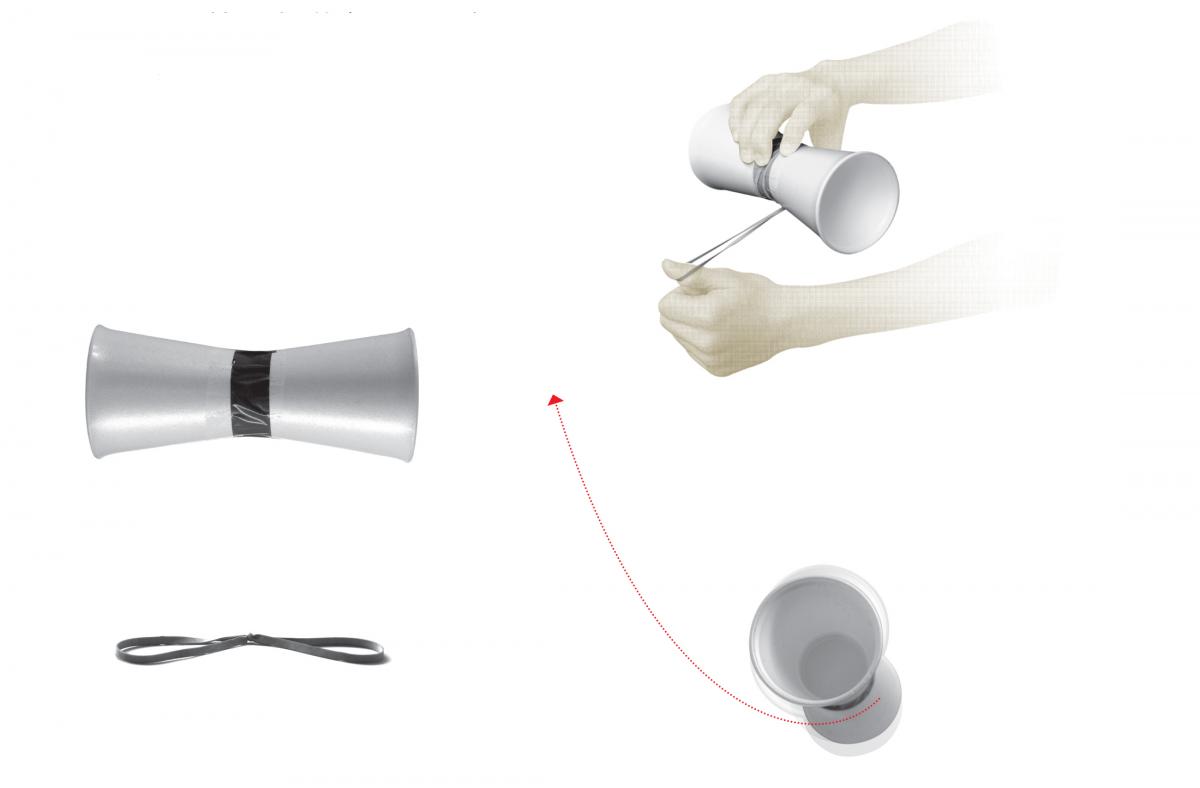Sports in a spin Understand article
Sporting success requires hard work and talent, and there’s an awful lot of physics determining the perfect shot.
A football flies through the air and seems to swerve magically past the defenders and goalkeeper. They turn just in time to see it swoop into the back of the goal. Skilful players know just how to hit the ball to try and beat the opposition but what is going on? The answer is down to aerodynamics.
A fluid game
Aerodynamics is a subset of fluid dynamics that allows us to understand the flow of gases, and so understand a vast array of everyday phenomena. That does not just help in the design of aeroplanes and cars, but also helps us understand balls in flight, from footballs and basketballs to fast flying table-tennis balls.

Macdonald; image source:
Wikimedia Commons
We often model balls in flight as projectiles, but a kick can be more complicated than you might first think. For a straight kick through the air the initial speed of the ball is approximately 30m/s. Assuming an angle of 45° that would suggest that the ball will travel 120 m, based on a parabolic flight. But instead, the ball will often travel a much shorter distance, with the ball falling more steeply at the end. The key factor is the influence of the air, which adds drag slowing the ball down.
However, there are tricks that players can use to make a ball move in different ways. For example, experienced football players know that the range of a kick may be extended by imparting backspin to the ball. Similarly, top-spin and side spin can be used to get a ball to drop behind a wall of defenders or curve around from a corner kick. This is because the spinning ball is subject to a phenomenon known as the Magnus effect, named after the 19th century German scientist Gustav Magnus, although the affect had been observed previously, including by a tennis-playing Isaac Newton .
The Magnus effect

to the right the air flow
causes a slight pressure
difference so that the ball
experiences a downward
force.
Image courtesy of Bartosz
Kosiorek; image source:
Wikimedia Commons
When a ball is kicked through the air, the air around it is turbulent and only imposes a little drag on the ball. However, that drag still exists and will cause the ball to start to slow. Below a certain speed, the air moving around the ball becomes laminar, rather than turbulent, meaning that it flows in smooth lines around the ball and stays close to the surface. If the ball is not spinning as it flies then this transition is not so important, but if the ball is spinning, then the transition to laminar flow means that spin effects can take over and the ball will start to swing.
How does this work? Imagine a ball spinning as it moves through the air. As it spins, some of the ball’s surface is moving with the ball’s direction of travel and so is moving ‘faster’ and some of the ball is moving in the opposite direction to the direction of travel and so it moving ‘slower’ with respect to the speed of the centre of the ball.
As the surface of the ball spins in the direction of the ball’s flight it ‘scoops up’ the air travelling past it using friction, increasing the air pressure on that side of the ball. Meanwhile, on the other side of the ball the surface is moving in the opposite direction to the trajectory of the ball in flight, and helps whip the air away, reducing the air pressure on that side of the ball. The air pressure on one side is increased, and the air pressure on the other side is decreased. This difference in air pressure results in a net force at right angles to the motion of the ball, and so the ball swings in the air. The direction of spin determines the direction of the force and so what way the ball travels.
Of course, in football the phenomenon of balls’ flight bending in the air is well known and you can often see the results as the ball confounds defenders, but the Magnus effect will be seen to greater and lesser degrees in all ball sports in this year’s Olympics. Table tennis players, for example, are masters of using the Magnus effect to outwit their opponents: if you watch a game on television, a view of a game from above can reveal the side-to-side curving of serves with different spins.
Back to ball games
You can explore spins and the Magnus effect in collaboration with your school’s sports department by trying to kick balls in different ways and seeing what happens. If you have less space for a spin based experiment you could also build a spinner with simple materials, as explained as part of the Institute of Physics resource ‘Thinking on your feet’w1.
Materials
- 2 polystyrene or polythene cups
- Sticky tape and scissors
- 2 elastic bands
- Cling film (optional)
- Paper and pencils
- A mobile phone or camera with slow motion video function (optional)
Procedure
- Tape the cups together at the base to make the spinner.
- Tie the elastic bands together.
- Hold one end of the elastic on the spinner where the cups join and wind it around a few times until the other end of the elastic is at the bottom and pointing away from you.
- Hold the spinner in one hand and stretch the elastic with the other then fire the spinner like a catapult to get backspin. Which way does the spinner bend?
- Now launch the spinner upside-down to get topspin. Which way does the spinner bend?
- For sidespin, you need to launch the spinner on its side, and at an upwards angle so it doesn’t fall too quickly to the ground. (Putting cling film over the ends of the cups also increases the time in the air.) Which way does the spinner bend?
- If you have a camera, try to capture the most dramatic video footage of each type of spin and the resulting motion.

Acknowledgements
This article was inspired by the work of John Bush of the Massachusetts Institute of Technilogy, US, whose chapter ‘The aerodynamics of the beautiful game’ (Bush 2013) provides much more information on the physics involved in football and gives the reader opportunity to dig a little deeper into the relevant fluid mechanics. Professor Bush was also kind enough to advise in the drafting of this article.
References
- Bush JWM, (2013) The aerodynamics of the beautiful game, in Sports Physics, Ed. C. Clanet, Les Editions de l’Ecole Polytechnique, p.171–192
Web References
- w1- Developed in collaboration with Arsenal Football Club, the UK’s Institute of Physics has published eight physics activities linked to the beautiful game.
Resources
- For more information on the motion of projectiles see:
- Kalogirou and Francis (2010) Going ballistic: modelling the trajectories of projectiles, Science in School, 17, 23.
- In his TED talk, Erez Garty explores the physics of an amazing free kick by Brazilian football player Roberto Carlos.
- Visit the Wolfram Demonstrations Project website for a demonstration of how laminar flow travels around a spinning cylinder.





